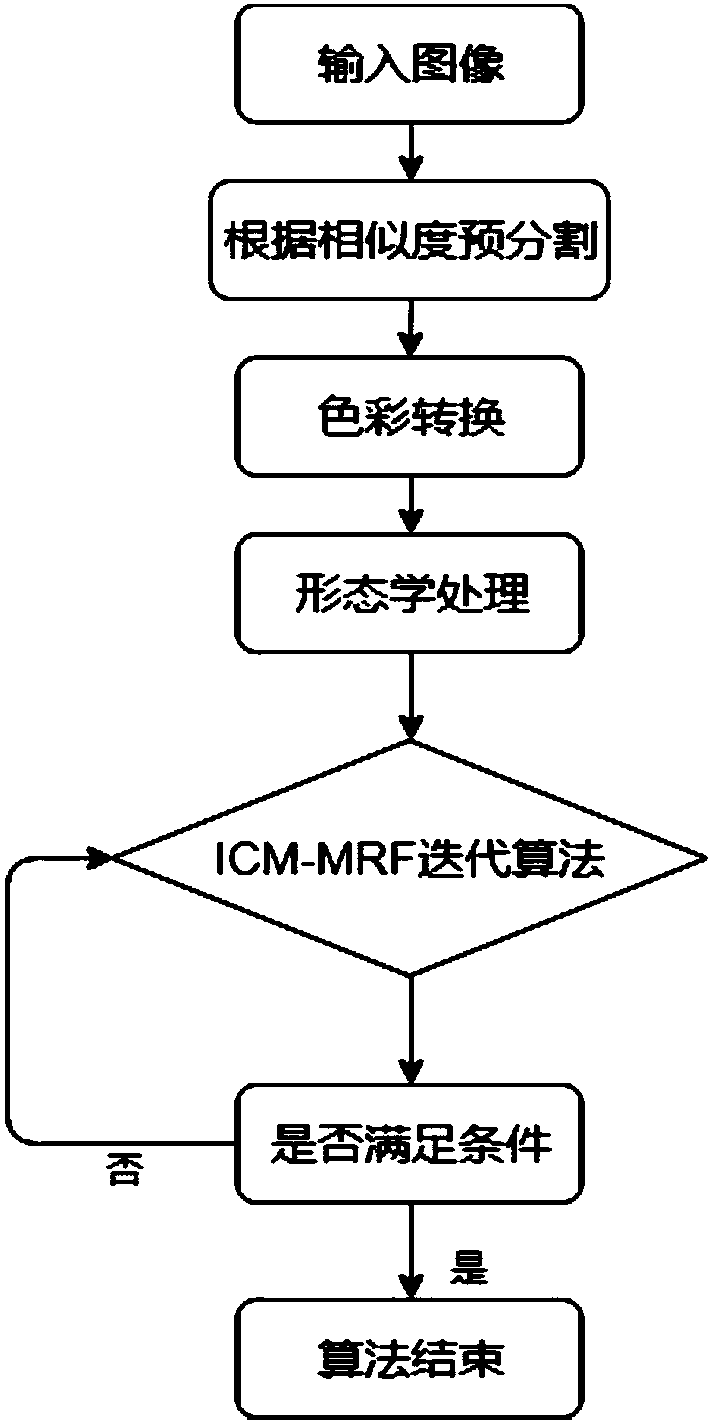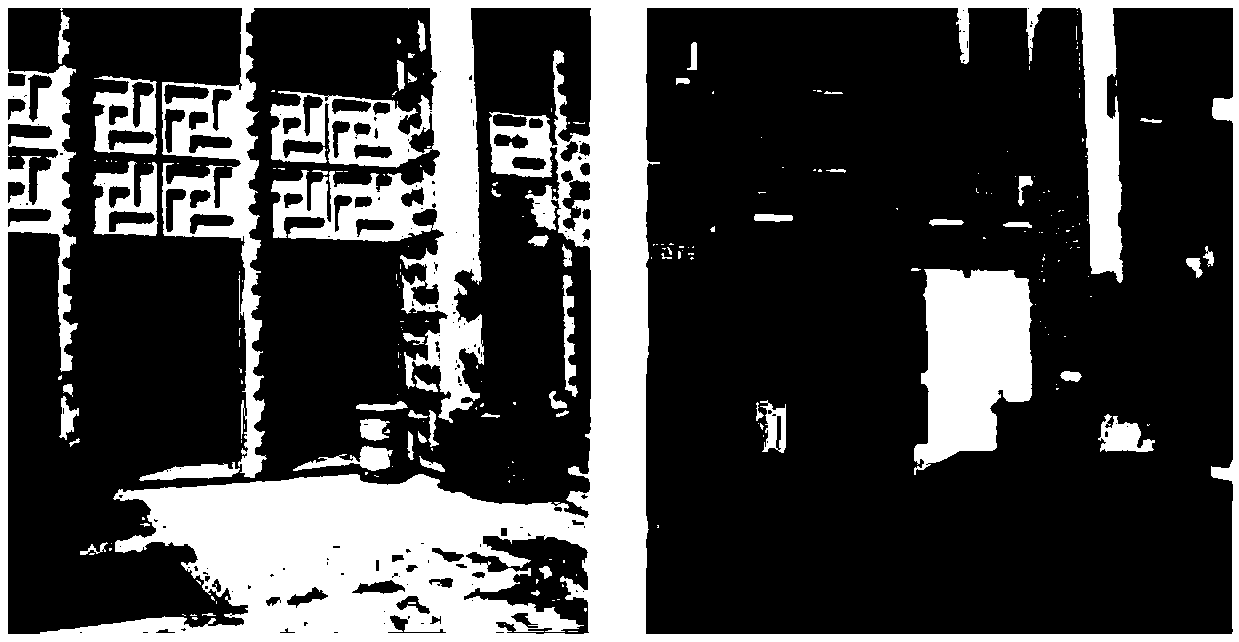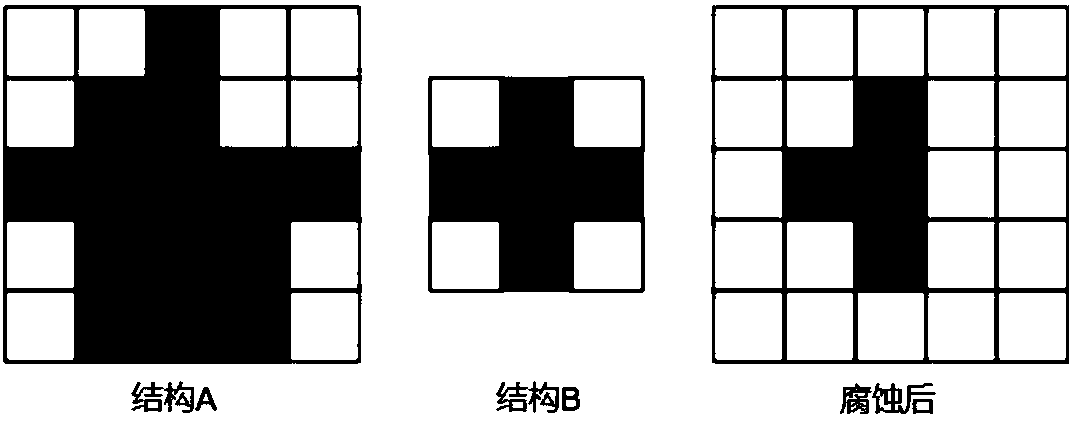An image segmentation algorithm based on Markov random field
An image segmentation and random field technology, applied in image analysis, image enhancement, image data processing and other directions, can solve problems such as the cost of solution speed, the inappropriate estimation of model parameters, and the tendency to fall into local optimal solutions.
- Summary
- Abstract
- Description
- Claims
- Application Information
AI Technical Summary
Problems solved by technology
Method used
Image
Examples
Embodiment Construction
[0070] The present invention will be further described below in conjunction with the accompanying drawings and embodiments.
[0071] This embodiment provides an image segmentation algorithm based on Markov random field, the flow chart of which is as follows figure 1 As shown, the image is first pre-segmented to obtain preliminary segmentation results, and then it is accurately segmented, including the following steps:
[0072] Step 1. In this algorithm, the similarity between pixels is calculated by the pixel distance. Here, the pixel similarity is calculated by the Euclidean distance of the YCbCr color space that is more in line with human color perception, and the input image of the algorithm is generally RGB color channel, so First convert the RGB color channel to the YCbCr color channel:
[0073]
[0074] Wherein, Y, Cb, Cr represent brightness component, blue component and red component in YCbCr color space respectively, R, G, B represent red component, green componen...
PUM
 Login to View More
Login to View More Abstract
Description
Claims
Application Information
 Login to View More
Login to View More - R&D
- Intellectual Property
- Life Sciences
- Materials
- Tech Scout
- Unparalleled Data Quality
- Higher Quality Content
- 60% Fewer Hallucinations
Browse by: Latest US Patents, China's latest patents, Technical Efficacy Thesaurus, Application Domain, Technology Topic, Popular Technical Reports.
© 2025 PatSnap. All rights reserved.Legal|Privacy policy|Modern Slavery Act Transparency Statement|Sitemap|About US| Contact US: help@patsnap.com



